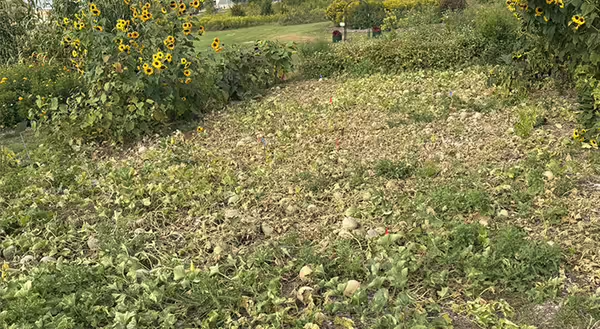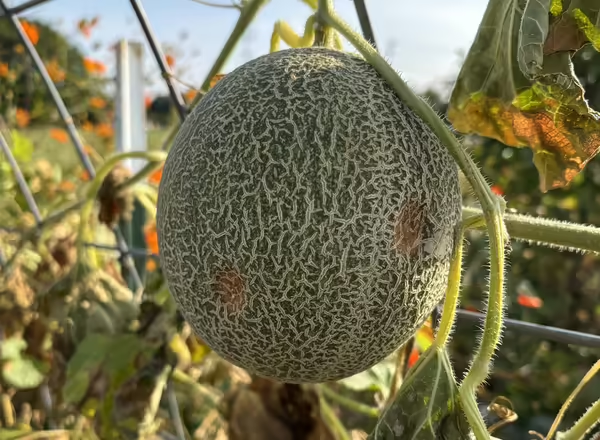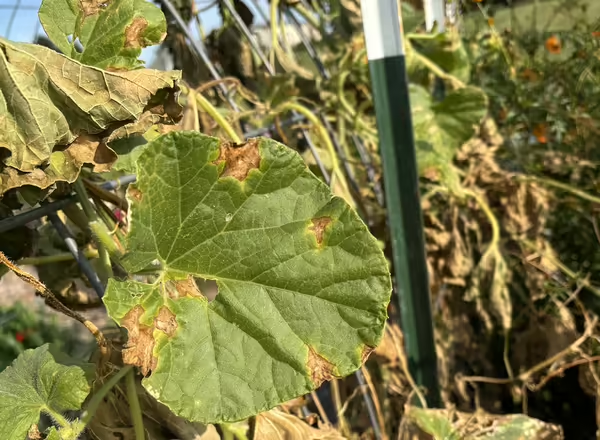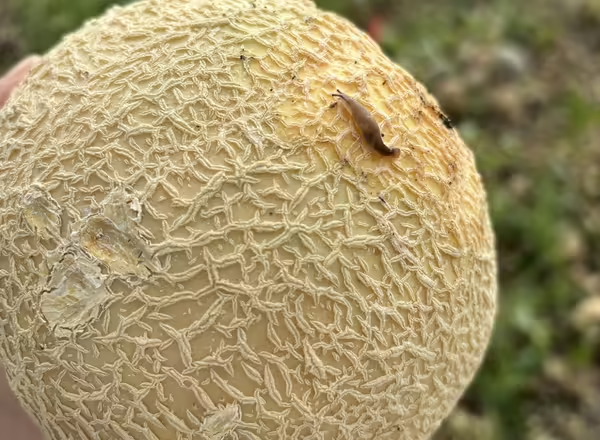
After missing an update in September, a lot has occurred in the melon research plot. Melons were maturing nicely until disease pressure set in late August, which was later identified as anthracnose. Melons started to show signs of disease on fruit, and vines were beginning to die off with immature fruit abortion. Melons were also vulnerable to rodent pressure, which created challenges with marketability and collecting soluble solid content for brix measurements after harvest. Weeds were managed well under the tree mulch system, but still had pressure from perennial sow thistle, Canada thistle and redroot pigweed at the west end of the plot. Pests like cucumber beetles and squash bugs were not a concern this year, the buckwheat patch at the edge of the plot might have helped decrease pest pressure and increased pollinator presence.

Mature melons harvested mostly fell into the “U.S. Fancy” range, with some falling into “U.S. 1” categories, data on marketability and harvest will be discussed in a future newsletter addition.
The USDA has sizing and grading standards for the marketability of fruits and vegetables, which also covers soluble solid measurements for muskmelons. For cantaloupes, “very good internal quality” is 11% soluble solid content, while 9% is considered “good internal quality.” Brix measurements were collected for each cultivar and are averaged below; however, not enough data was collected to statistically analyze for differences and significance in sugar content of melons:
‘Hales Best Jumbo’: 12.6%
‘Honey Rock’: 9.3%
‘Hearts of Gold’: 9.8%
The quality and flavor differed between varieties, with ‘Hales Best Jumbo’ being the fan favorite of the St. Charles Extension Office, which aligns with the 12.6% sugar content. ‘Honey rock’ and ‘Hearts of Gold’ were cute and produced a smaller melon better for personal consumption, but the flavor was not as sweet and seemed a little bland compared to ‘Hales Best Jumbo’. It would be interesting to conduct a future study that compares melon marketability and soluble solid content with muskmelons grown in sandy soils, since melons are known to be sweeter when grown in sandy soils.

